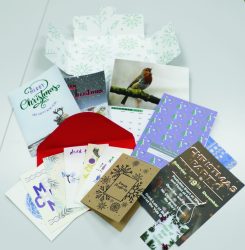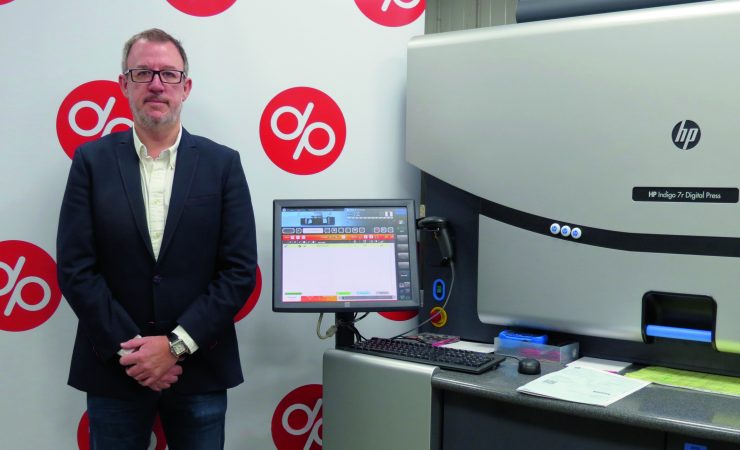‘Tis the season that many printers depend upon to boost their revenue and add to their profit margins. But what do customers expect from Christmas printing and when should you start preparing? Charlie Kortens found out
Christmas printing? I know, I know, by the time you read this we should still be in Autumn, but for many printers the time to start thinking about the holiday season is right now. As Route 1’s brand manager Christie Round tells Digital Printer, ‘Every business’s seasonal plan is unique and when you start thinking about Christmas really depends on what each business wants to get out of the season. However, we would recommend that our clients be set up no later than October.
‘This is because, as a reseller, you need to be ready even before the end-users themselves start their Christmas marketing. Your customers will want talk to you about their ideas, to check out quotes and find out what possibilities you can offer them. If you’re not ready, they can lose confidence in you as a print supplier.’
For Gary White, managing director of digitalprinting.co.uk, October is too late. ‘Generally, we would start in July, getting our own Christmas marketing material sorted out,’ he says. ‘This leads on to making sure we have all the product lines we want to sell online this year available on DigitalPrinting. co.uk and price check them all to make sure we are competitive in the online market with a view to having them all live by mid-August. ‘

During lockdown Precison Proco produced ‘Sitees’ – full size figures which could be produced in the image of family and friends
Even July is leaving it too late though, at least according to Jon Tolley, chief innovation officer at Precision Proco Group. ‘January,’ he insists, when asked when his company starts planning for the festive period. ‘That’s when all the product development and integration kicks off again. It’s where we look at the processes which were in place for the previous Christmas and look at what process improvements can be made.’
This might seem slightly absurd to some, but as Mr Tolley says, to Precision Proco Christmas is ‘massively important, it’s a huge part of what we do and is responsible for the vast majority of personalised products we produce and a huge amount of revenue. The gifting market plays a crucial role in our business and for that market it’s the busiest time of year.’
Unsurprisingly the sentiment is echoed by both our other contributors. As Mr White explains, ‘Like most commercial printers, whether online or offline, the last quarter of the year is normally the busiest period and a lot of that has to do with Christmas. There is always a real buzz across the factory floor and the whole business in November and December and it is when we are at our most efficient which always makes me extra proud of the team. ‘
Ms Round concurs, adding, ‘Christmas is very important to us at Route 1 Print because it’s important to our clients. We have a peak season that starts in September and runs all the way through to New Year. Above all, we want to make sure our clients have everything they need ahead of time to get through that peak period.’
Festive products
All well and good, but which products spike in demand when Christmas rolls around? ‘It’s all pretty predictable,’ Ms Round concedes. ‘We see increases in orders for greetings cards, but also New Year items like diaries and calendars. We also see a boost in invites because there are typically a lot of work parties at this time of year. One thing that’s interesting though is the increase in embellishments across the board. We get more Spot UV and more foiling work at Christmas, not just red and green foiling either!
Mr White says much the same thing, ‘It’s all the usual suspects for us, invites, Christmas cards and calendars. Stickers and labels are one segment that has a taken a jump in demand. It seems to be for adding that personal touch for gift wrapping, and the craft and artisan markets are big users of these.’

Route 1 offers a range of Christmas products
For his part Mr Tolley highlights the importance of custom products. ‘At Christmas there’s a huge demand for all categories in our personalised product range. We are monitoring all the key drivers like basket value, repeat customers, profitability for our clients. The product ranges are never ending – from the more obvious ones such as cards, calendars and books to mugs, garments, tea towels, tote bags and baubles. One of the most unusual ones in recent times has definitely been personalised feeding mats.’
The bling’s the thing
We’ve just touched on personalisation and embellishment, always key selling points for digital print, but are these the key trends to watch when it comes to Christmas printing?
‘Embellishments is definitely the big one for us,’ Ms Round says. ‘Customers are more likely to go all-out to create some truly special print around Christmas. We see lots of gold and silver foil, and the number of requests for red and green options is what led us to launch these options in the first place. We’ve also received several requests for calendars with a drilled hole in for hanging, so we launched those last year too. The other thing we get asked for is Carte Lumina – a stock that is coated on one side but uncoated on the other. This is ideal for greetings cards as it gives the front a glossy, premium feel, but it’s still easy to write on.’
Similarly, Mr Tolley mentions personalisation. ‘As above, personalisation is a massive driver for the Christmas market. Although we produce more than 100 million products over the year, everything to us is a quantity of one which is about as short as it gets! What’s particularly important is content rather than embellishments – for us content is king.’
Mr White just states that, ‘As we are a digital printing business, short runs are our speciality and demand appears to be growing for shorter runs which suits our strengths. This is as true at Christmas as any other time of the year.’
To wrap up, we asked each of our three printers what advice they would give to someone looking to ramp up their presence in the Christmas printing market. ‘Get yourself some samples,’ says Ms Brand. ‘It’s much easier to sell luxury stocks or finishes when customers can see, and feel, the print in their hands. You should also take the time to understand why your customer is asking for something. Once you understand, you can make better suggestions for upselling and cross-selling other items.’
Mr Tolley recommends sorting your workflow early on. ‘Think about scale – can your system cope with a possible huge influx of orders of one? Be realistic about what you’re capable of.’
Mr White, however, brings us full circle. His advice is simply, ‘start preparing in June!’ We hope that this late July reminder is still in time.





